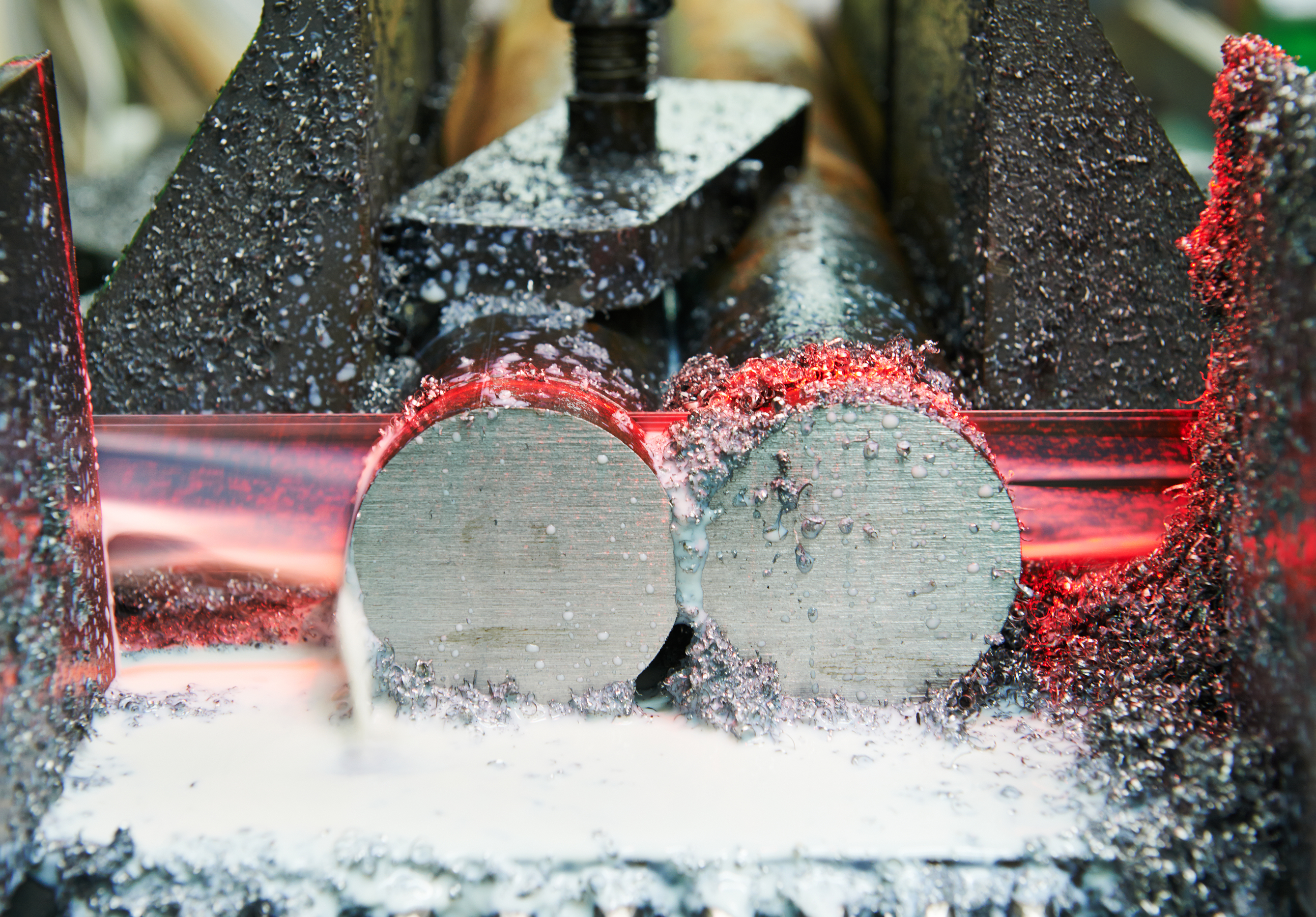CryoEdge Solves an Ancient Problem with a Cutting-Edge Solution
 Ever since the Stone Age, people have searched for the most effective ways to cut and shape materials for best use. This quest has most recently resulted in revolutionary breakthroughs and developments like lasers, plasma beams, and water jets as cutting instruments. Despite these advances, the overwhelming majority of cutting tasks still require metal with a sharpened edge, which has one key undesirable trait: it wears out and gets dull. Not so with CryoEdge, a sales and service company based in the Spokane, Washington area. CryoEdge’s essential issue goes back to prehistoric times: how can we cut things better and make the tools we use for cutting last longer?
Ever since the Stone Age, people have searched for the most effective ways to cut and shape materials for best use. This quest has most recently resulted in revolutionary breakthroughs and developments like lasers, plasma beams, and water jets as cutting instruments. Despite these advances, the overwhelming majority of cutting tasks still require metal with a sharpened edge, which has one key undesirable trait: it wears out and gets dull. Not so with CryoEdge, a sales and service company based in the Spokane, Washington area. CryoEdge’s essential issue goes back to prehistoric times: how can we cut things better and make the tools we use for cutting last longer?
This is where metallurgy enters. Societies that use metal have known for centuries that it can be enhanced by a combination of heat treatment and quenching (cooling in a medium), often repeated several times in alternating sequence. Quenching can be done in a variety of ways in numerous types of fluids, but with the advent of modern techniques, results advance to new levels by using compressed gases in a liquid state, optimizing effects at the molecular level and changing metals in ways our ancestors couldn’t have imagined.
When CryoEdge founder John Alcamo learned of these new methods, he had already been in the saw- and tool-servicing industries for more than 35 years and had operated a conventional sales and sharpening operation, ProCut Saw & Tool, for the majority of that time. “I realized this was a game-changer,” says Alcamo about his decision to invest in a process of cryogenic treatment that began with bandsaws and cold saws for his existing customers.
Alcamo readily admits that his mind is practical rather than theoretical where it concerns the exact molecular changes that the CryoEdge process brings about. “There are a lot of scholarly studies out there – material testing, charts, diagrams of molecular lattice, research about proportions of austenite and martensite, and how they affect the usable life of the metal. When it comes down to it, the reason I know I’ve got a tested process that works is because of the positive feedback I get from customers and the repeat orders. (For those interested in pursuing the research, CSA hosts the Cryogenic Treatment Database, an online database that contains scientific and informational articles related to cryogenic treatment. Find it at 2csa.us/ctd.)
One repeat customer is Andy Drouhard, lead machinist for Utec Metals Inc., a manufacturer in Spokane Valley. “I get a lot more out of the treated tools,” he says. “I’m cutting some large-diameter, difficult-to-cut steels. Historically, with my previous blades, when we cut those, I would not get straight cuts. Now, I’m getting very true cuts with the treated blades, and these pieces are going directly into the lathe; so a truer cut means it’s a lot easier to machine. I’ve been running this saw for 17 years, cutting big steel. I would not get this amount of life from any other blade I’ve run. When you go back and measure the square inches of all these cuts, it was a significantly larger amount of material cut.”
Cryogenic treatment of metals has been performed since as early as 1937 when Russian researcher A.P. Gulyaev documented his findings in an article entitled “Improved methods of Heat-Treating High-Speed Steels to Improve the Cutting Properties,” published in a Soviet journal called Металлург (Metallurg, i.e., “Metallurgist”). More recent literature points to NASA’s development of cryogenic applications as a key factor in yielding the techniques that are in use today and which are still being refined. As for its own process, though CryoEdge is prohibited by the terms of a license agreement from disclosing exact details, Alcamo acknowledges that the treatment involves temperatures below −300° F as part of a several-step quenching procedure that is time-consuming and meticulously regulated in a controlled, carefully monitored sequence.
As CryoEdge grows, Alcamo finds interest from unexpected industries. A chance meeting with Jamie Blackhart, CEO of Advisor Tactical Products, LLC and a firearms industry veteran, introduced Alcamo to that industry’s unique history with cryogenic metal treatments, particularly for maintaining the fine precision necessary for the best rifle barrels.
Alcamo finds the diverse new business avenues challenging but rewarding. “Our slogan is ‘Changing tools from the inside out,” he comments. “Now we’re doing the same thing to our business.” www.cryoedge.com



